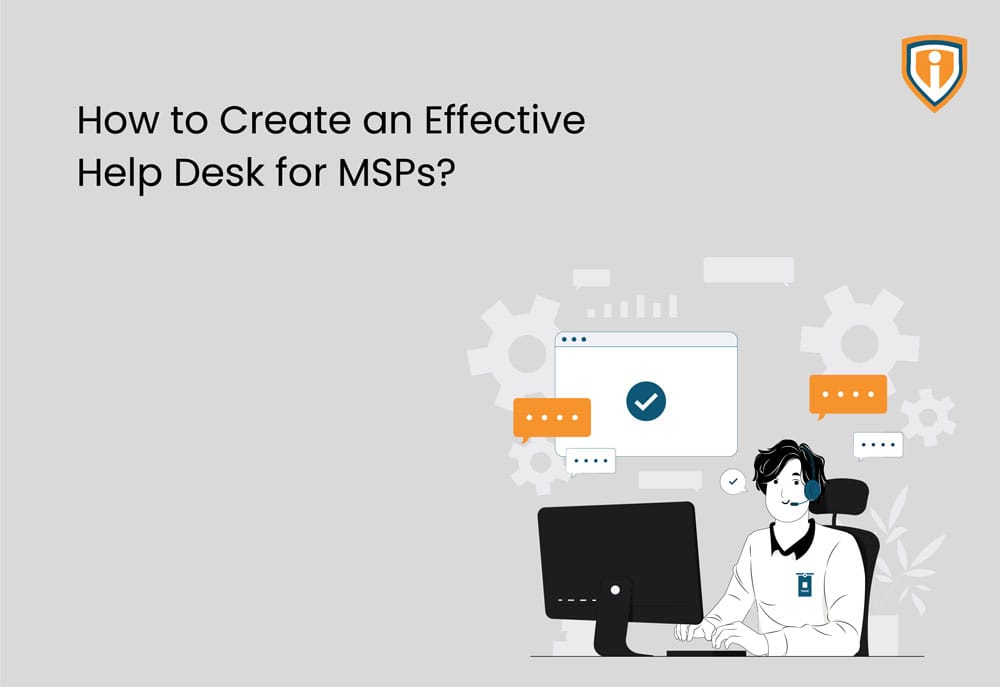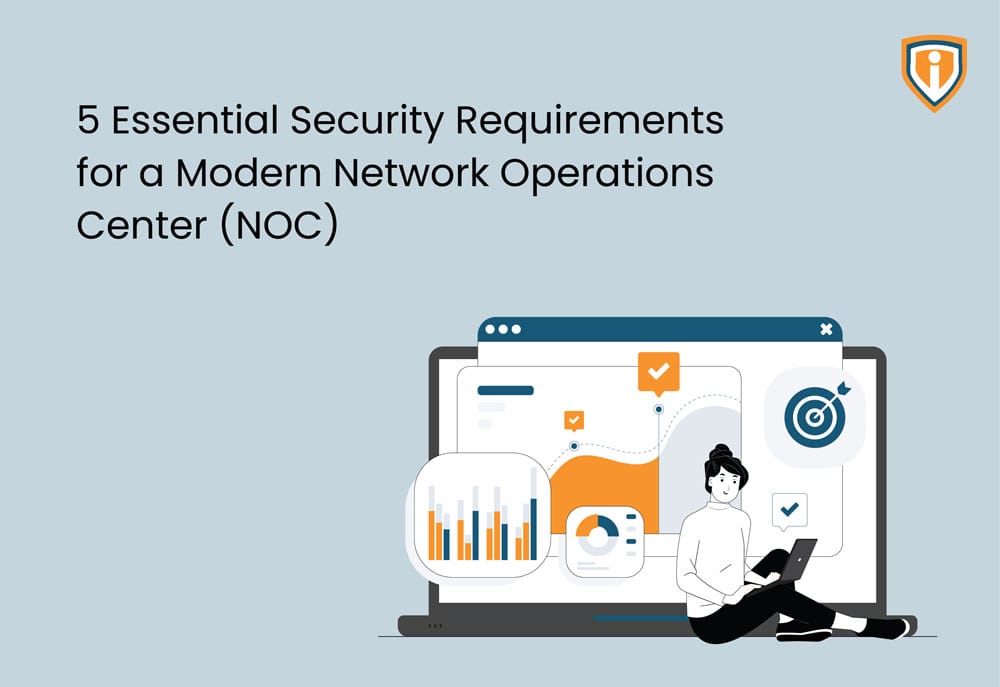Effective MSP help desks are critical to increasing customer support and retention rates. The consequences of ineffective support desk systems and management include higher downtime and staff burnout.
An MSP Help Desk: What Is It?
An MSP help desk is precisely what it sounds like: a support facility where clients may report concerns, ask questions, or get assistance with a particular issue.
The help desk is essential to an MSP since it alerts the MSP to any immediate concerns. Furthermore, a support desk screens query so that an MSP operator or team is not inundated with them. The most successful support desks are always present – at the very least, throughout standard business hours.
How to Create an Efficient MSP Help Desk
To establish a support desk for the very first time, MSPs must complete the following six steps:
1. Build a Knowledge Base.
An effective knowledge base will include the following:
- Your help desk team’s how-tos.
- Troubleshooting techniques.
- Solutions to frequently asked queries.
Your knowledge base should have everything that your team might need including client documentation, credentials, network details, pictures, details regarding recurring issues, etc. This should be accessible to everyone involved so that the information can be used when needed.
2. Use Specialized Help Desk Software
The first recommended practice is to employ support desk software. Help desk software can provide employees with the tools they need to complete IT requests properly. There are several kinds of support desk software options. Still, you should seek options that are simple to navigate and set up, as well as those that give a unified, consistent set of capabilities that decrease remediation time. The help desk crew will be able to spend more time resolving user difficulties and less time acquiring new software as a result.
3. Streamline Your Ticketing and Operations
Ticketing software automatically produces and allocates tickets to employees based on their skills and knowledge level in automatic ticketing. With this program, you can avoid determining what category the request belongs under and who to call. This procedure may be automated, which saves time and money.
A greater degree of automation allows your help desk to instantly find problems, log them as tickets, and then fix them. This form of automation is suitable for regular help desk inquiries with a repeatable solution. By automating the handling of such issues, your help desk has more time to devote to cases that require manual intervention.
4. Employ Qualified Technicians
Help desk teams can function efficiently thanks to skilled experts who rapidly resolve IT issues. It is time- and resource-consuming to have problems that cannot be resolved by lower-tier professionals repeatedly escalate to the highest technicians.
If you have difficulty hiring qualified technicians, consider creating documentation for fixing frequent difficulties and focusing on regular training. Instead, businesses may collaborate with knowledgeable managed services providers (MSPs) to co-manage specific help desk or IT support requirements, freeing up your team to work on higher-value IT initiatives.
5. Set up Effective SLAs
SLAs (Service Level Agreements) outline the services provided by your support desk. They also cover the help desk’s responsiveness and measures for monitoring its operation.
SLAs are a legally binding contract between the support desk and the consumers it serves. Both sides’ expectations are clearly stated in this agreement. This eliminates many potential future misunderstandings. SLAs are often applied to MSPs but may also assist internal IT teams in defining measurements and objectives.
6. Keep Track of Your Support Desk Stats
Monitoring help desk metrics gives you a thorough understanding of how your help desk functions. It serves as a visual representation of which elements of the help desk may require development and allows you to track your progress.
Help desk goals can be based on metrics, including resolution, rate, response time, and client satisfaction.
To Conclude,
Help desks may significantly improve customer support operations for an MSP company. However, it is critical to have the appropriate plan – and the right software – in place to ensure that your help desk functions smoothly and effectively for your organisation’s and your clients’ benefit.
What are the benefits of having a help desk for MSPs?
Having a u003ca href=u0022https://www.infrassist.com/help-desk-for-msp/u0022u003eu003cstrongu003ehelp desk for an MSPu003c/strongu003eu003c/au003e can provide several benefits, including:u003cbru003eu003cbru003eu003cstrongu003eImproved Client Satisfaction:u003c/strongu003e Clients can easily report issues or request help, which can lead to faster response times and improved resolution rates.u003cbru003eu003cbru003eu003cstrongu003eIncreased Efficiency: u003c/strongu003eHelp desk software can automate ticket creation and assignment, which can help MSPs manage their workload more efficiently.u003cbru003eu003cbru003eu003cstrongu003eBetter Visibility:u003c/strongu003e MSPs can track and analyze ticket data to identify trends and areas for improvement.u003cbru003eu003cbru003eu003cstrongu003eEnhanced Collaboration:u003c/strongu003e Help desk software can enable collaboration between team members, allowing them to share knowledge and resolve issues more quickly.g them to share knowledge and resolve issues more quickly.
What features should a help desk for MSPs have?
Some essential features that a help desk for MSPs should have include:u003cbru003eu003cbru003eu003cstrongu003eTicket Management:u003c/strongu003e Deploy a u003ca href=u0022https://www.infrassist.com/enhancing-efficiency-exploring-the-definition-benefits-and-tools-of-msp-ticketing-systems/u0022u003eu003cstrongu003ehelp desk ticketing system that hasu003c/strongu003eu003c/au003e the ability to create, track, and manage support tickets.u003cbru003eu003cbru003eu003cstrongu003eKnowledge base:u003c/strongu003e A database of articles and resources to help users resolve common issues.u003cbru003eu003cbru003eu003cstrongu003eAutomation:u003c/strongu003e The ability to automate ticket creation, assignment, and escalation.u003cbru003eu003cbru003eu003cstrongu003eReporting:u003c/strongu003e The ability to generate reports on ticket volume, resolution times, and other metrics.u003cbru003eu003cbru003eu003cstrongu003eIntegration: u003c/strongu003eThe ability to integrate with other tools such as remote access software and monitoring tools.
How can MSPs ensure that their help desk provides good customer service?
MSPs can ensure that their help desk provides good customer service by:u003cbru003eu003cbru003eSetting clear expectations for response times and resolution rates.u003cbru003eProviding friendly and professional service.u003cbru003eCommunicating clearly and effectively with clients.u003cbru003eEmpathizing with clients and understanding their needs.u003cbru003eFollowing up with clients to ensure that their issues are fully resolved.
What are some common challenges that MSPs face when managing a help desk?
Some common challenges that MSPs face when managing a help desk include:u003cbru003eu003cbru003eManaging a large volume of support requests.u003cbru003eEnsuring that issues are resolved quickly and effectively.u003cbru003eBalancing competing priorities and managing workload.u003cbru003eMaintaining a high level of customer satisfaction.u003cbru003eKeeping up with rapidly evolving technology and client needs.
What is the role of a help desk technician in an MSP?
A help desk technician in an MSP is responsible for providing technical support and assistance to clients. They typically handle support requests through various channels, such as phone, email, or chat. Help desk technicians are also responsible for documenting and tracking support requests, escalating issues as needed, and following up with clients to ensure that their issues are resolved.
How can MSPs ensure that their help desk is cost-effective?
MSPs can ensure that their help desk is cost-effective by:u003cbru003eu003cbru003eImplementing automation and self-service tools to reduce workload and increase efficiency.u003cbru003eUsing analytics and reporting to identify and address inefficiencies.u003cbru003eOutsourcing non-core help desk functions to third-party providers.u003cbru003eOffering tiered support options to clients based on their needs and budget.u003cbru003eRegularly reviewing and optimizing staffing levels and resource allocation.u003cbru003e





